Mouson Plateau
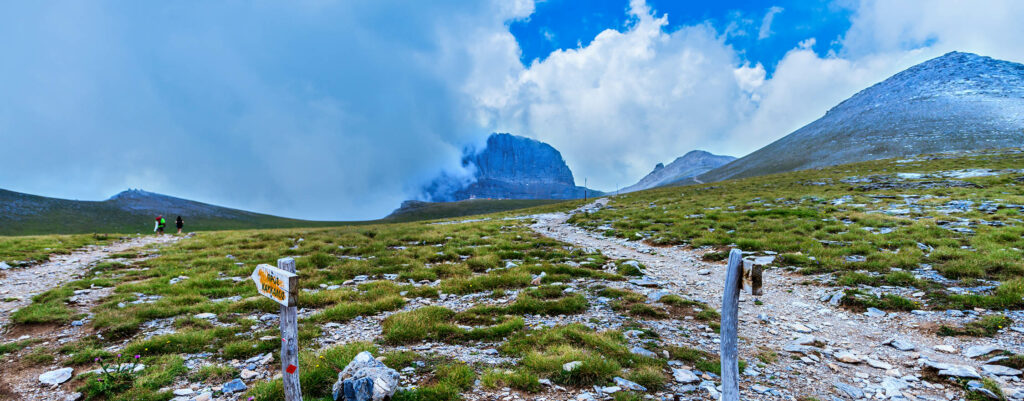
The Muses Plateau. It is the name of the uneven but yet serene plateau south-west of Profitis Elias top.
Palaioi Poroi
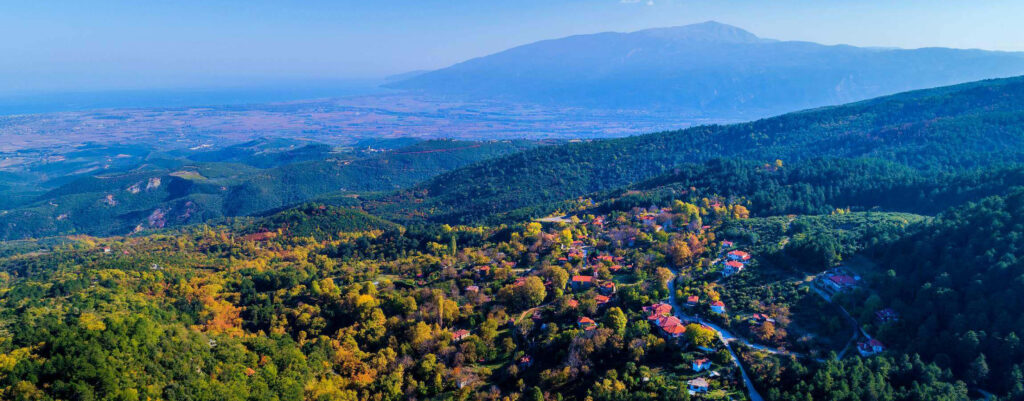
Just five kilometers north of coastal Neoi Poroi and under the roof of imposing Mt. Olympus is the traditional settlement of Palaioi Poroi, a beautiful and picturesque village with an altitude of 600 m, a perfect place for strolls among stone-built houses and churches dating back to the 19th century. Palaioi Poroi is a favorite destination for nature lovers. Sprawled above the village, a forest rich in pines, chestnut and strawberry trees, small streams and the spectacular view of Mt. Olympus against the Thermaic Gulf revive one’s whole being. Hotels, lodges, taverns with local delicacies featuring locally-grown ingredients make the passage through Palaioi Poroi an unforgettable experience.
Paleos Panteleimonas
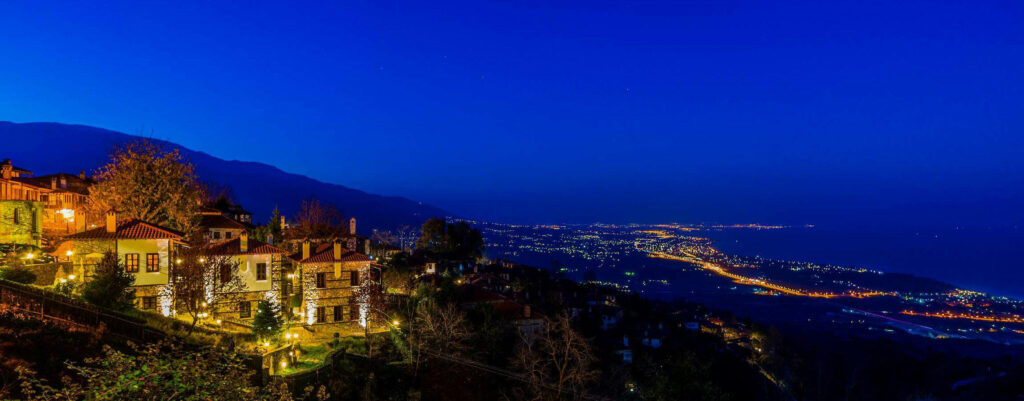
Old Panteleimonas is a traditional settlement that has been preserved in its original state, without having undergone any architectural alterations or interventions in the process of time. The village, which was most probably founded in the 14th century, is built over an altitude of 700m. and offers amazing views towards Mount Olympus and the Golf of Thermaikos. Due to landslides along the cliffs, the village’s permanent residents have moved to New Panteleimonas. Most of the buildings forming the traditional settlement were bought and were renovated by people living in Larisa and Thessaloniki, who were eager to maintain intact the region’s architectural heritage.
Among sights to visit, there is the church of Agios Panteleimonas, old buildings, the renovated school-building and the picturesque village-square with its taverns serving local cuisine, and its known barbequed goat and cheese (galotiri). Cobblestoned alleys lead to the settlement’s center, while cars stay parked at the outskirts of the village.
Palia Vrontou
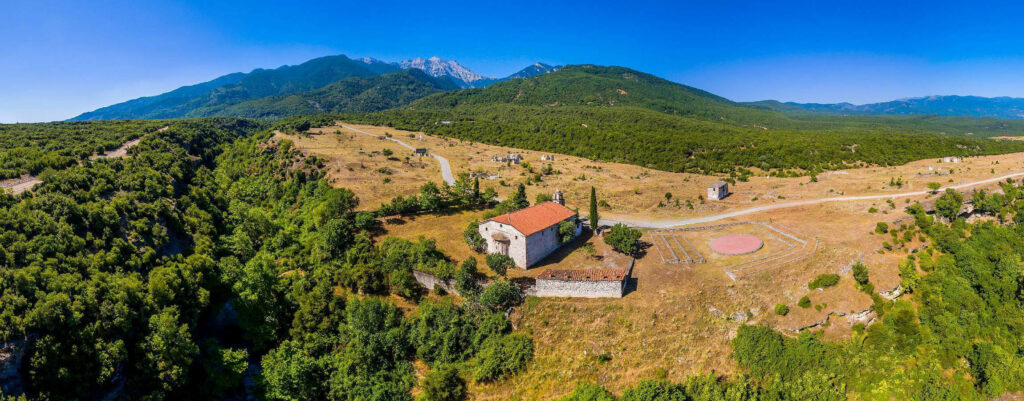
Built at an altitude of 400 m, the village acquired its name (ed. note: vrontos means loud noise) from the roar of the mountain’s waters rushing through the village. It’s a a ghost town today, with the old church of Agios Nikolaos being the only surviving building, with a hand-carved wooden altarpiece, which has been declared a protected monument.
Old Monastery of Agios Dionysios
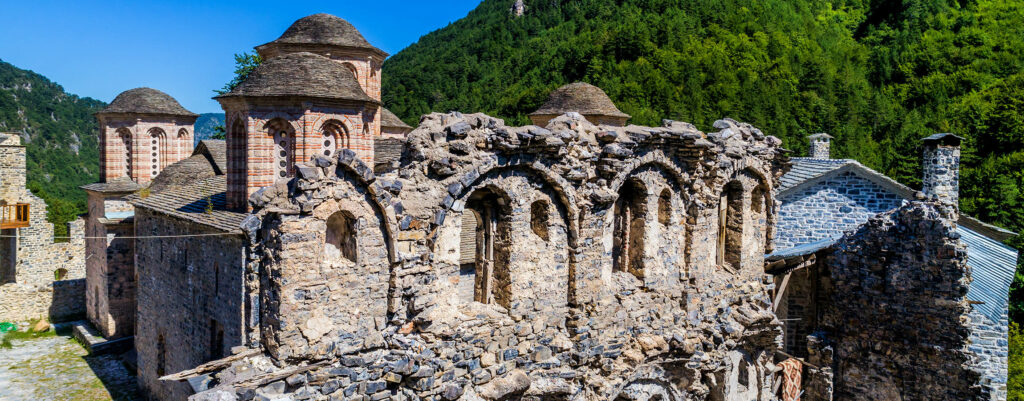
The monastery of Agia Triada of Olympus was restored by the monk, saint of the orthodox church, Dionysus, in 1543, at the gully of Enipeas, at the place where there was an older Byzantine monastery with the same name. The Thessalian blessed Dionysus the young (from Drakotripa Karditsas), before the establishment of the coenobium on Olympus, he had been a monk at Meteora and an abbot at the monastery of Philotheos at Mt. Athos, having the reputation of a literate ascetic and calligrapher. The Turks destroyed the monastery several times due to fires and raids, since it had been a base of Macedonian thieves. It was devastated in 1943 by the German occupation troops, who considered as a centre of national resistance on Olympus. As for the old monastery, the ruins of the catholic (of the central church), an 18th century building, and of the northern wing together with the altar and the monastery’s tower are still preserved.
Panteleimona beach
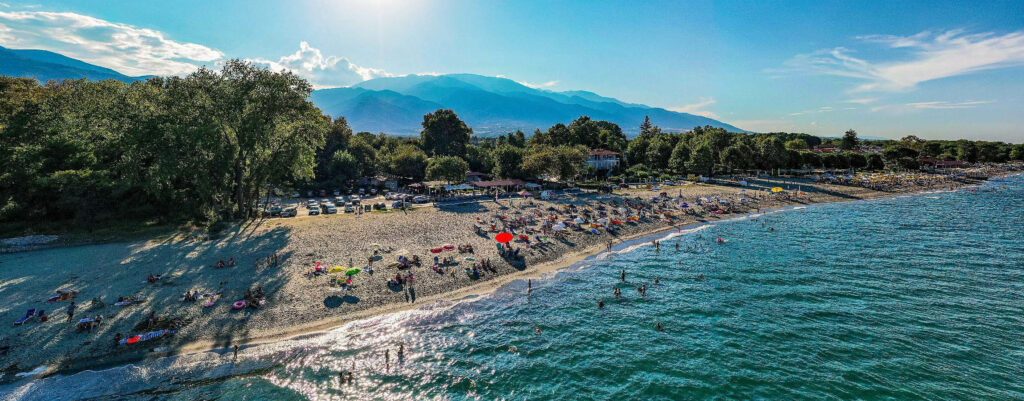
As the Castle of Platamonas stands imposingly right above it, the spectacular beach of Panteleimonas with its lush vegetation and crystal-clear waters attracts thousands of visitors from Greece and abroad. Featuring a well-organized infrastructure, the area has a large selection of hotels, lodges, water sports, cafes, bars and seafood taverns; in short, all that’s needed for a carefree vacation.
